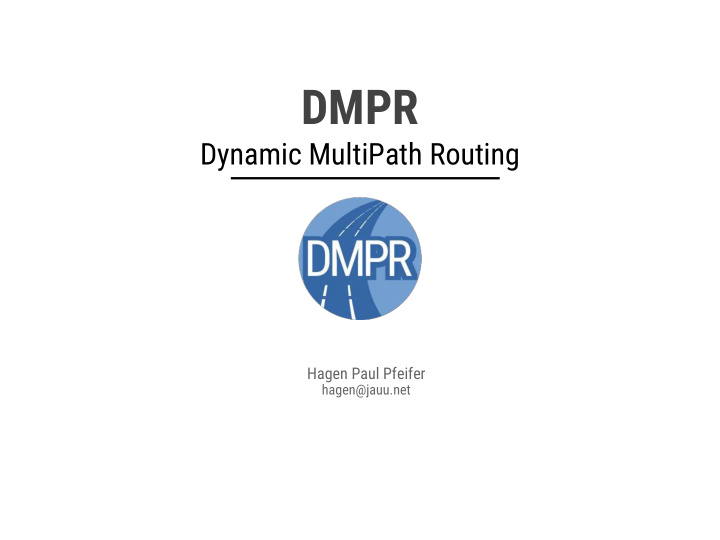



DMPR Dynamic MultiPath Routing Hagen Paul Pfeifer hagen@jauu.net
DMPR Introduction Problem Statement - I
DMPR Introduction Problem Statement - II
DMPR Requirements - Routing protocol gap different interior routing protocol - Designed for highly dynamic environments (plattform change) - Suitable for low bandwidth environments (1kbyte/s ) and scalable for gigabit links - Policy based routing as a first class citizen - Support for highly asymmetric links - Support for unicast only transports (LTE, BGAN terminals) - Minimal configuration effort & autonomous neighbor detection
DMPR Offspring Dynamic Multi Path Routing Protocol - a loop free path vector routing protocol A new routing protocol based on BGP, OLSR and Babel concepts - enriched with glue logic and missing pieces
DMPR Message Example Routing instance A broadcast periodically messages at all interfaces Receiving routing instances B stores received information and stores information about the received link (path characteristics) Step 3: routing instance A broadcast a new routing message including own information and path vectors to neighbors based on the best path for enabled metrics at each interface including path characteristics Encoding path information from C to A lowest-loss: { C → [1] → B → [1] → A } highest-bandwidth: { C → [2] → A }
DMPR Path Selection Algorithm
DMPR Message Format
Source code : https://github.com/protocollabs/
Questions?
Recommend
More recommend